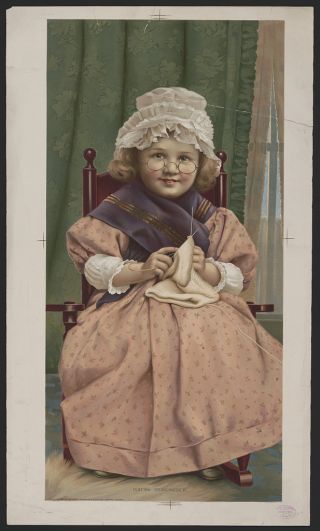Wisdom
A World Without Grandmothers: What Would We Lose?
What impact will declining fertility rates have on the role of grandmothers?
Posted May 29, 2024 Reviewed by Kaja Perina
,_by_Gaetano_Bellei.jpg?itok=03ZFOqaq)
Many years ago, I dreamt that I was living in a cottage in the Irish countryside with a kindly old woman who claimed she was my real grandmother. In the dream, I was terribly confused. My flesh and blood grandmothers, both deceased, were natives of Eastern Europe. Neither carried a speck of Irish DNA. Why the dream designated Ireland as my birthplace I can only guess—Ireland is the land of fairy folk and bardic tradition, a place where I’d feel right at home.
Carl Jung would have called this a “big dream.” Big dreams are archetypal (I wrote more about this in “Dreaming Our Lives: 5 Things Our Dreams Could Be Telling Us”) and compensate for something missing in one’s conscious life. In the case of this dream, I had no meaningful relationship with either of my grandmothers. One died before I was born; the other had been an orphan, had not been mothered herself, and was too worn out from her difficult life to provide succor. The dream about an Irish granny signified my unacknowledged yearning for a nurturing elder female presence.
.jpg?itok=Q-TFD4zy)
The need for a grandmother or nurturing elder female figure (the fairy godmothers of fairy tales) resonates below our level of consciousness. She appears in many guises, both animal and human, as a staple in popular children’s picture books. Wemberly, a tween mouse with anxiety issues in Kevin Henkes’s’ Wemberly Worried has a supremely wise and hip grandma who advises her fretful granddaughter to just “go with the flow.” Tomie dePaola’s classic series of picture books about Strega Nona introduces an old Italian witch granny who has magic curing spells up her sleeve.
Grandmothering can be a blissful experience, reciprocally devotional and cherishing, less fraught with the self-sacrificing and exhausting aspects of parenting, but it can also present considerable emotional and real-time hurdles depending on the psychological and financial family situation.
The book Eye of My Heart: 27 Writers Reveal the Hidden Pleasures and Perils of Being a Grandmother, a kind of primer about being a grandmother, offers engaging essays that read as “reports from the front” on the joys and pitfalls of the role. In her introduction, editor Barbara Graham describes the delicate balance between being available to love and support a grandchild and her parents while maintaining a hands-off non-intrusive distance. Graham writes, “I soon learned that I could love my granddaughter fiercely, with a passion that made me hunger for her when she was out of range, but I could have no say—in anything. She was mine but not mine.”1
In our collective experience and imagination, grandmothers provide the attention, wisdom, comfort, and guidance that can supplement or repair parental care. The percentage of children living with at least one grandparent (called skip-generation households in which a child lives with a grandparent but no parent) has increased 36% since 2000 (from 9.3% to 12.7%).2 The reasons for this are complex and are related to larger numbers of single-parent households headed mostly by single mothers. Lack of adequate provisions for childcare and healthcare have put tremendous emotional and financial burdens on these households. Skip-generation homes ensure the survival of at-risk children.
Evolutionary scientists have something to say about the role and origins of grandmotherhood. In her book, The Social Instinct: How Cooperation Shaped the World, Nichola Raihani, Professor of Evolution and Behavior at University College London, writes that our species is almost unique in having a prolonged post-reproductive lifespan. Other species, including our closest primate relatives, continue to breed until they die.
In humans, our evolutionary time clock sets a daughter’s reproductively-active period to click on just as her mother is undergoing a transition to menopause. This allows the grandmother to turn her energy and attention to her grandchildren rather than to her own newborn offspring, which benefits the chain of species survival. As Raihani writes, “It is likely that these ancient grandmothers acted as repositories of knowledge, passing vital information on everything from breastfeeding to dealing with infants’ illnesses.”3
“Age of menopause is also heritable,” Raihani notes, “as more and more women living in industrialized societies delay having children until later in life, menopause also seems to be getting later.” Data from the Journal of the American Medical Association affirms this.4

Today, about 10 million women in the U.S. use the birth control pill and 13 million have undergone sterilization.5 These facts, along with unstable working conditions, the pandemic, lack of paid leave, and a world in flux have contributed to a decline in birth rates. A 2022 report by the World Economic Forum detailed a 50% decline in fertility rate worldwide over the past 70 years.6 A recent report in The Lancet concluded that 97% of countries will not have high enough fertility rates to sustain their population size by 2100.7
Couples are deciding to have smaller families than past generations, plus unplanned pregnancies and the rate of teen births are down.8 If fewer children are being born, more post-reproductively active women will not become grandmothers. How will this change our society?
Can we imagine a world without the crucial contributions of grandmothers?
Across time and millennia, matriarchal goddesses have been a sacred aspect of many cultures. As figures of wisdom, they carry knowledge of the ancestral past and can offer practical, skillful guidance for the future. As archetypal figures, they point to an eternal need in the human psyche, a need that is still with us. In the coming decades, will older women who have no children or grandchildren step forward to fill a gap in a society that more than ever needs the positive caring values we associate with grandmothers?
Whatever stage of life you are in, take a moment to consider these questions. Did you know your grandmothers? If yes, what was your relationship with them? What do you remember about them? What lessons did they teach? What did you learn from that relationship?
References
1 Graham, Barbara, Eye of My Heart: 27 Writers Reveal the Hidden Pleasures and Perils of Being a Grandmother, HarperCollins: New York (2019), p. xiii.
2 E. Link, T. Watson, S. Kalkat, “More kids are living with their grandparents. Can safety net policy keep up?” Brookings Institution, December 20, 2023.
3 Raihani, Nichola, The Social Instinct: How Cooperation Shaped Our World, St. Martin’s Press: New York (2021), p. 105
4 Appiah, D., Nwabuo, C., Ebong, I., Wellons, M., Winters, S. “Trends in Age at Natural Menopause and Reproductive Life Span Among U.S. Women, 1959-2018,” Journal of American Medical Association (JAMA), April 6, 2021;325(13).
5 Daniels, K. and Abma, J., “Current Contraceptive Status Among Women Aged 15-49: United States, 2017-2019,” NCHS Data Brief, October 2020
6 Alvarez, Pablo “What does the global decline of the fertility rate look like?” World Economic Forum, June 17, 2022
7 GBD 2021 Fertility and Forecasting Collaborators and researchers at the University of Washington, Seattle, USA, The Lancet: Dramatic declines in global fertility rates set to transform global population patterns by 2100, Institute for Health Metrics and Evaluation, March 20, 2024
8 Prakash, Prarthana, “Millennials and Gen Z won’t have enough kids to sustain America’s population—and it’s up to immigrants to make up the baby shortfall,” Fortune, January 25, 2023




